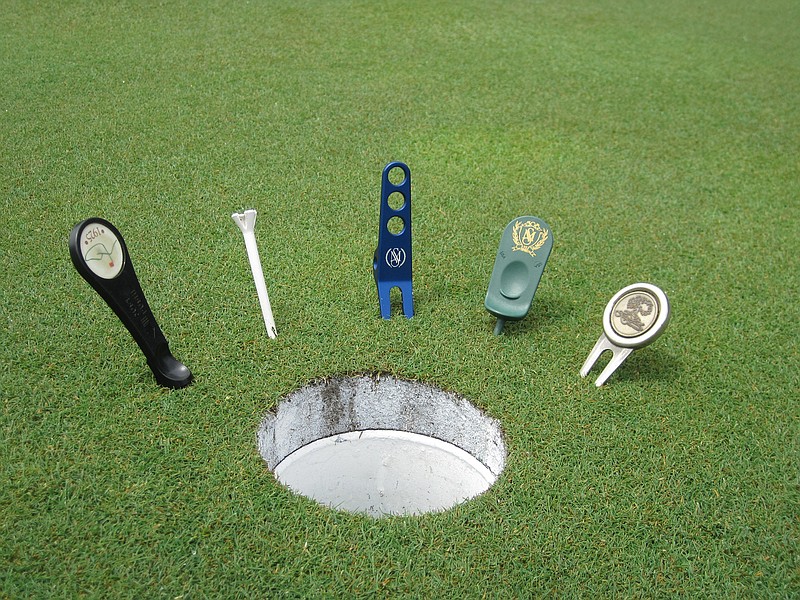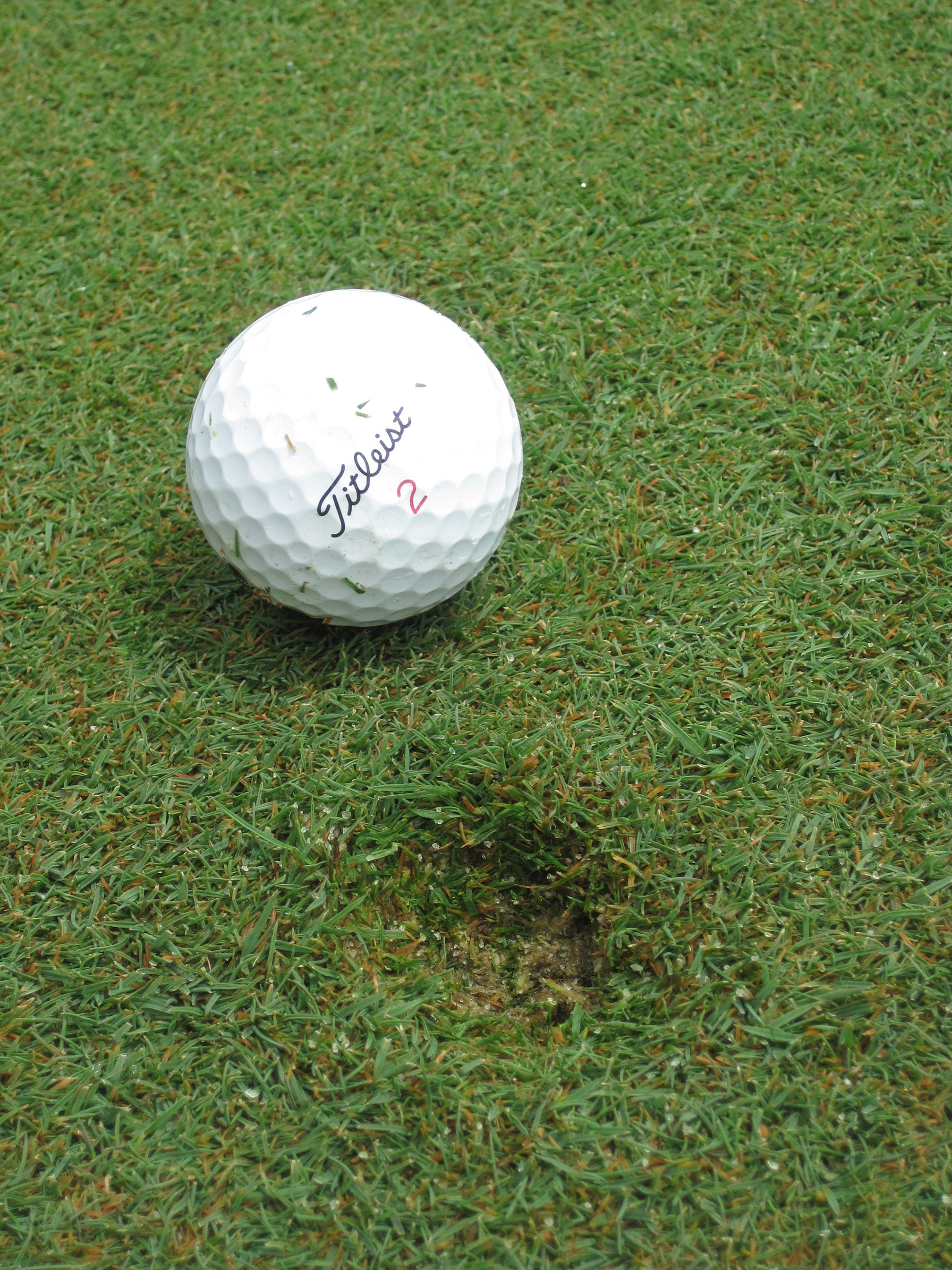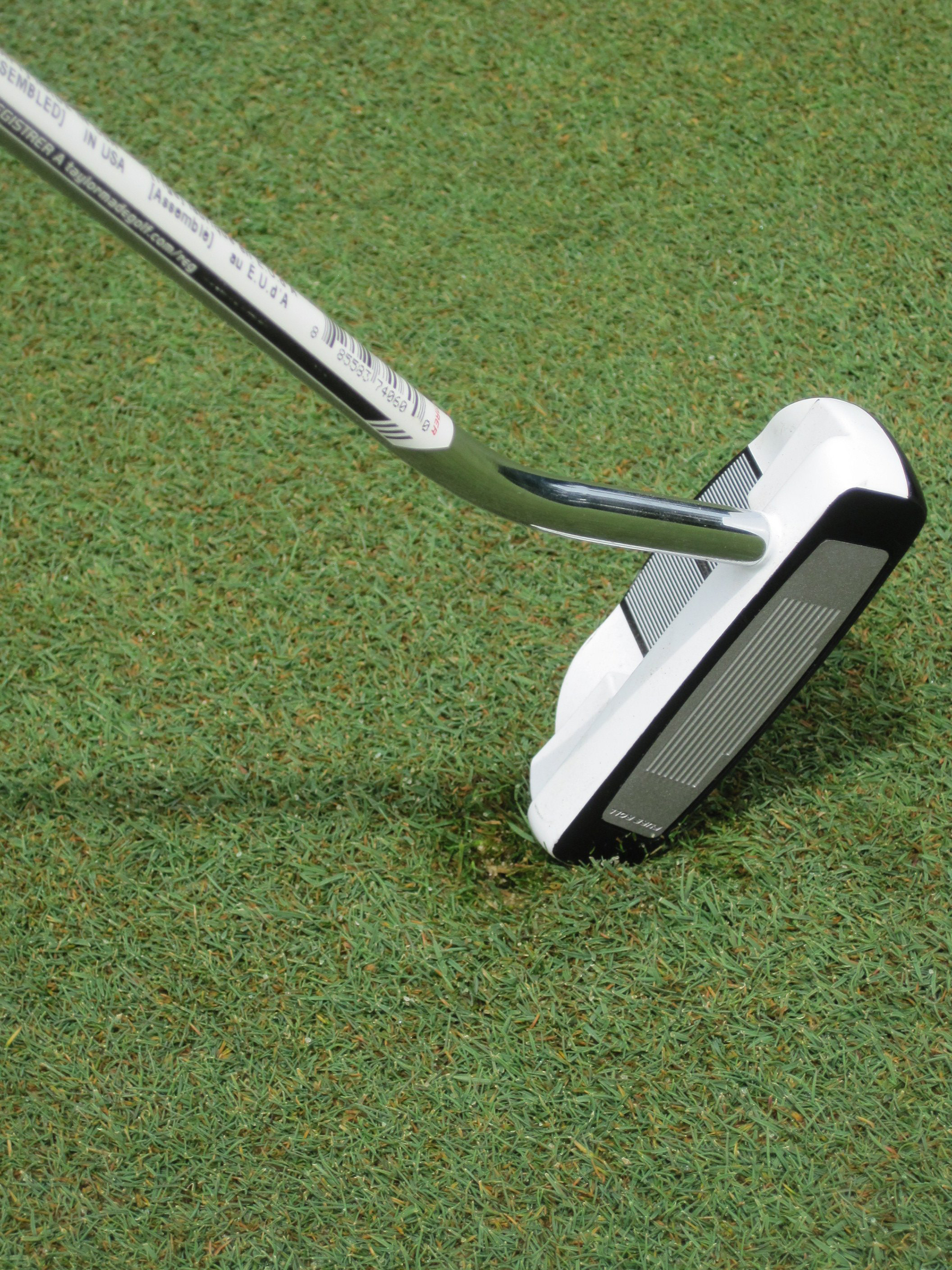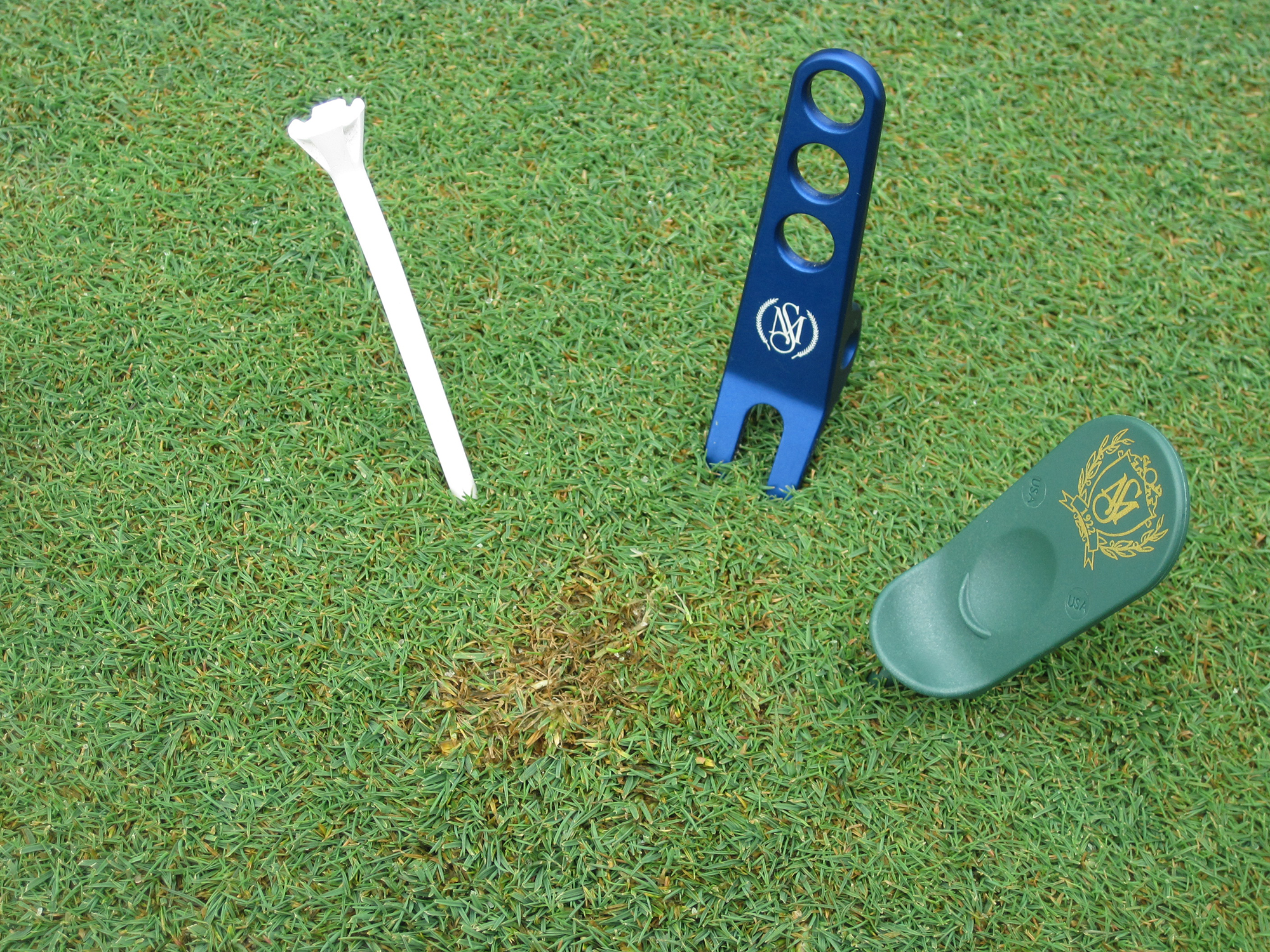Pat Rose has walked the greens at Signal Mountain Golf and Country Club in the pre-dawn hours with a flashlight and a golf tee as his tools.
In those hours, he's cleaning up messes left behind by others.
They're ugly, hideous depressions in the greens -- ball marks left behind by golfers who didn't care to take the 10 seconds necessary to heal a scar on the putting surface, where a true roll is of the utmost importance.
A ball mark that goes unrepaired can be unsightly for more than two weeks, cause putts to roll off line and possibly become a bigger problem if a mower -- one capable of cutting within a tenth of an inch -- goes over it in the pre-dawn hours, leaving a blemish the size of a soft drink can.
"Golfers should use a golf tee or a repair tool and push it in from the sides, then use the bottom of their putter and give it a couple taps of love," said Rose, who oversees the mountain course and was trained by Tennessee Golf Hall of Fame member David Stone. "Every mark costs us extra time in the mornings, and if a mower goes over it, there can be a huge mark."
The importance of repairing ball marks applies to every course and every golfer. Repair is not only a courtesy to those in later groups on a given day, but it should be a common courtesy no matter the importance of the round.
"If ball marks aren't repaired on a certain area of a green, then it's hard to use some pin locations that would be ideal for tournaments," Rose said. "You don't want to put a cup between two old ball marks or in the neighborhood of a place with a dozen poorly fixed marks."
Fixing ball marks is on par with many other course courtesies that golfers should follow. Rose, as well as Bear Trace at Harrison Bay superintendent Paul Carter, advises that golfers follow the signs, be courteous to fellow golfers and know that the superintendents want to keep the course as pristine as possible. So when a sign says, "Cart Path Only," there's a reason. When a sign says, "90 degrees," there's a reason. When a sign says, "Please repair ball marks," there's a reason.
"I want golfers to treat the course as if it were their own: Obey cart rules, rake bunkers and be a gentlman," Carter said. "We're trying to protect the course not just for that day but for the immediate and distant future.
"That includes repairing ball marks."
Contact David Uchiyama at duchiyama@timesfreepress.com or 423-757-6484. Follow him at twitter.com/UchiyamaCTFP.
Expert advice
The Golf Course Superintendents Association of America conducted a study and concluded the following: * A ball-mark scar occurs no matter which sort of tool is used. * Golfers should repair ball marks, but many do not do so properly. * Improper use of a traditional tool may cause more damage than not fixing it at all. Do not * Ignore the fact that you left a mark on the green. It's there. * Whack at the depression with the toe of your putter to put the grass back in place. * Stomp and twist on the mark with your foot, especially if you're wearing spikes. * Use a tool and lift from underneath the depression. That creates a cavity and rips up roots. Do * Find it -- Every shot to a green leaves some kind of mark, even on greens with new Bermuda grass varieties. * Push -- Use a tee or tool and push from the outside of the depression in all 360 degrees of the dimple. * Bring the edges together -- Be gentle, but bring the outside edges of the depression together in the middle. * Tap that grass -- Use the bottom of a putter and tamp down the green to make it level. * Be courteous -- Not everybody is as kind as you, so fix any other ball mark that you find on the green.



